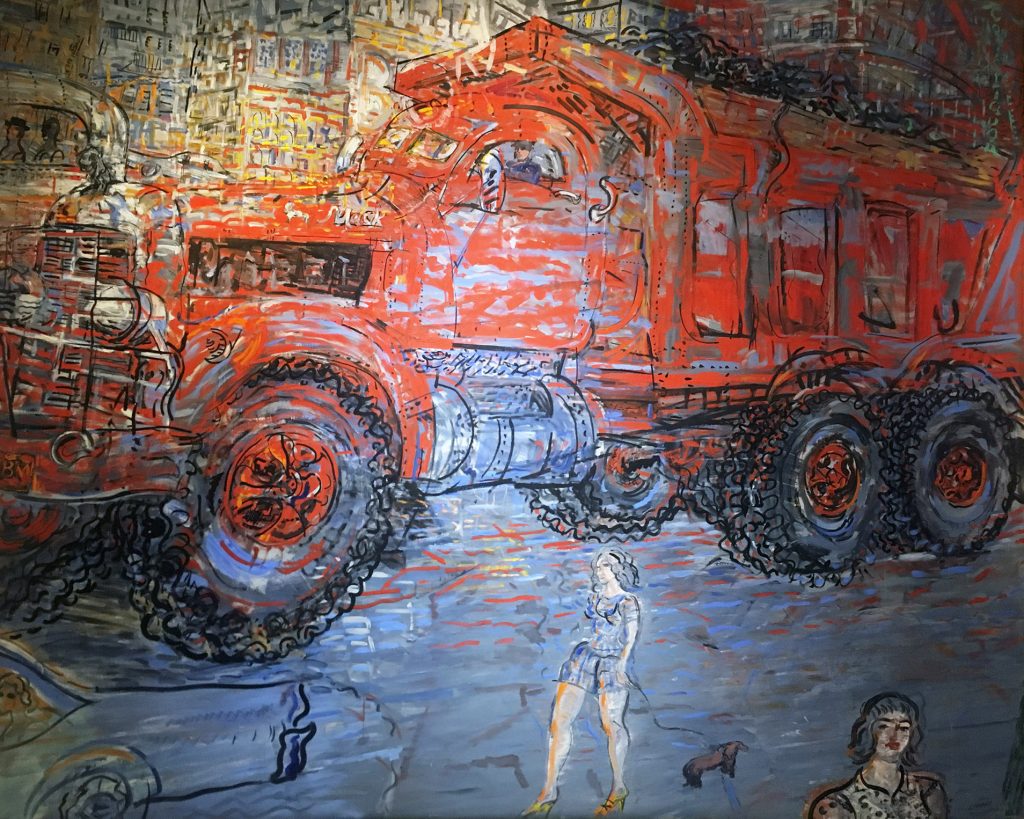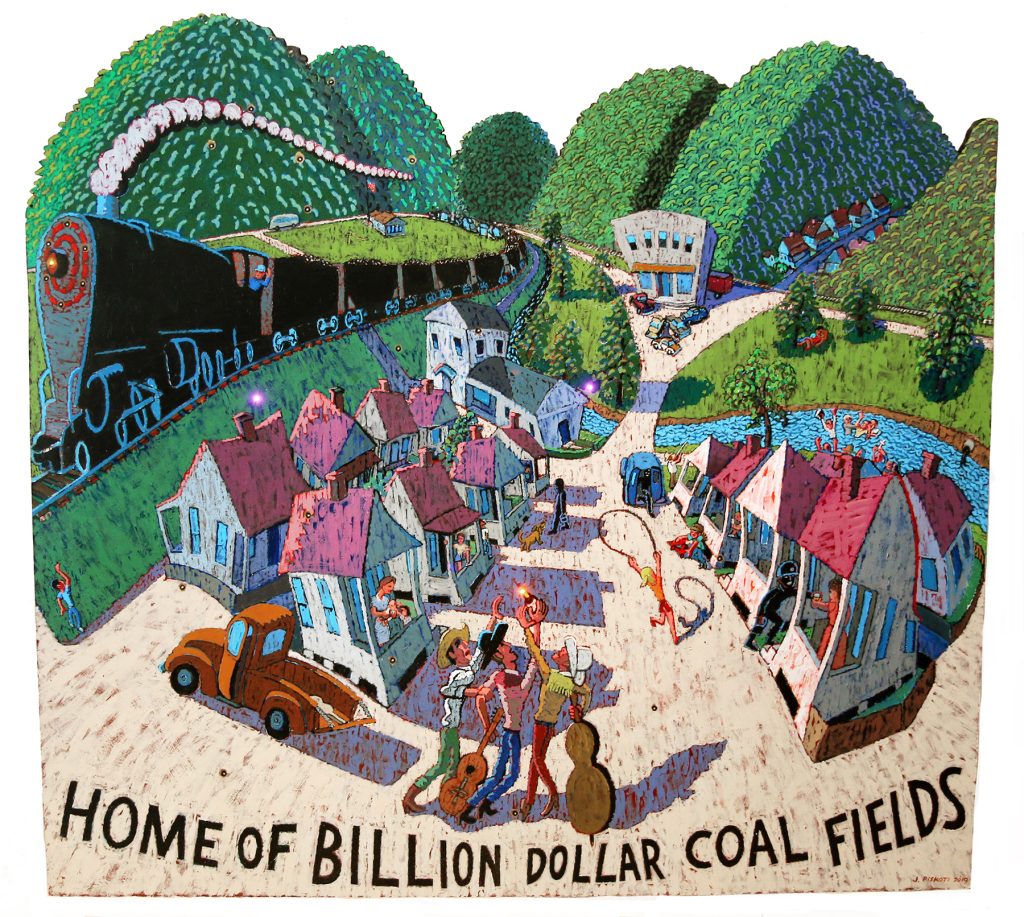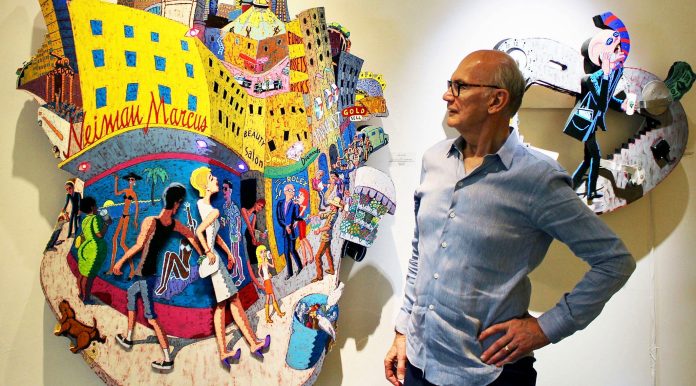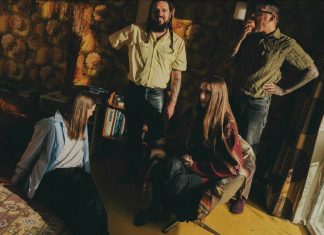By Mark Hanzlik
Early in October as the Fall weather began to cool the Sacramento Valley, I stood close to Jim Piskoti in his fourth-floor hospital bed and looked out a window at a scene that would have inspired him to splash paint on canvas and maybe add his own unique kinetic touches. The spot was a flat landscape of East Sacramento, teeming with green treetops against a cloudless brilliant blue sky. The ancient Alhambra Water Tower and a familiar McDonald’s sign were bursting up from an array of businesses, and most importantly in the foreground, a vast freeway structure filled with the daily movement of vehicles.
One week later, on Oct. 10, Piskoti, age 81, died at home in his studio, with his wife Carol and others gathered in support.
Piskoti was an art instructor and a figurative artist who by his own account, considered himself an outsider, preferring to work in isolation. He produced works that revealed the depth of his ability to translate all subject matter into its final form. Piskoti was less convinced of this incredible gift.
I met Piskoti nearly 20 years ago when he had already been experimenting with kinetic art for a few years, incorporating motion, artificial light and sound. Captivated by the multi-sensory experience and Jim’s own excitement over his creations, I wanted to learn more about how he came to be the artist he became.
As an artist Piskoti covered a wide range of subjects over his long career, but often mechanical vehicles of all sorts were the images he associated with most: luxury cars, bulldozers, hearses, trains, farm equipment, and most importantly big trucks.
Born in West Virginia in 1944, at age 12, Piskoti moved to Flint when his father began working at an automobile factory.
Both the coal mining in Appalachia and the bustling auto industry in Michigan had lasting effect on Piskoti’s work throughout his life.
Late in his career in 2019, Piskoti chose coal mines when he produced Auto-biographical, Monaville, a kinetic painting with electrical and mechanical components including audio. The image depicted is what he called the “home of billion-dollar coal fields.” For Piskoti, it was a personal way to re-create a vision of the small mining village where he had lived. He remembered the coal miners, the scrap metal and the dirty creek where they had baptisms.
Currently on the wall in their River Oaks home in the Pocket Area, you’ll find one of Piskoti’s oldest and largest paintings – that of a Mac Truck. He had created a (7×9 foot) 6.5’ x 8.5’ strikingly original work aptly titled Mac that was shown for the first time in 1969 in the Alpha Gallery in Boston.
More than just early subject matter in his paintings, vehicles would appear in more than half of his drawings, prints and paintings during his long career. As one might have expected, Piskoti also had been a serious collector of vintage truck replicas made of metal.
At the University of Michigan, Piskoti was already experimenting with social commentary and charting a course for himself using printmaking and painting. Upon graduation he produced a series of photo-realist paintings of funeral hearses that resulted in being accepted into Yale University. Piskoti laughed at the success of those creations, recalling the simplistic process involved.
While at Yale, Jim also spent time in NYC where he was not only exposed to the contemporary art scene but to the sights and sounds of an urban environment that would reveal itself in different ways through his art for years to come. At this time, Piskoti also became fascinated with filmmaking, animation and making soundtracks, something he never quite found the time to pursue as deeply as he would have wished.
After completing his master’s degree at Yale, Piskoti headed west for a teaching gig at California State University Stanislaus in Turlock where he taught studio courses in printmaking, painting and drawing. Piskoti gives credit to Martin Camarata, a colleague in Turlock who hired him, in what became a story that Piskoti enjoying sharing.
Piskoti appeared for a formal interview for the position all messed up, stitches and bandages on his head and thought he wouldn’t look as noticeable with a big heavy coat and hat covering the bandage: “I must have made some kind of impression on him because he’s the type of artist that likes the idea of someone like Van Gogh cutting his ear or something. He probably thought ‘this guy is kind of nutty but he may make a good artist.”
One of his students, Carol Lee took an interest in her lanky professor, and they began a relationship that would extend beyond 50 years. Carol says, “he looked like Andy Warhol, head full of blonde hair, glasses, very skinny.”
The first dozen years of their relationship included a lengthy commute after Carol landed a teaching job of her own in 1973 at John F. Kennedy High School in Sacramento.

Piskoti continued to create numerous two-dimensional paintings in the 1980’s and 90’s along with an expanding variety of scenes. He garnered many awards as his work was exhibited throughout Northern California and beyond. During this time, some of Piskoti’s paintings were evoking darker moods, and he began to juxtapose optimism and pessimism on the same canvas.
One example of this visible in his 1984 acrylic painting On the Sunnyside of the Street, Piskoti shows on one side; a porno theater, lowlife characters and old woman looking toward the brighter side of the street, directly at a younger woman with a backdrop high fashion and plenty of money.
The use of humor and caricature sometimes in Piskoti’s art made me realize, he too must have read Mad Magazine and followed the works of R. Crumb and other artists of his generation. Taken as a whole, Jim’s work remains positive and at times humorous, despite his dark tones and need to take on difficult subjects.
One of my personal favorites was Bliss (2017) Piskoti describes it as “a guy having a great hamburger—fully lost in enjoying it. He also has a milkshake and some fries. His dog is having some fries every now and then, and the mayonnaise and mustard is dripping down on the floor. Just a total indulgence with food, what could be more fun?”
I liked that Piskoti was also a snazzy dresser. When not working hard in his studio, he hung up his lab coat and was sculpting a recognizable look that remained his trademark for years. Fashionable personally crafted suits and his favorite, Allen Edmonds shoes completed his impressively dignified image.
Piskoti said he always tried to adhere to the lofty principals he espoused as a teacher. That’s certainly showed in the way he carried himself through a lifetime revolving around art. He taught right out of graduate school for 35 years until he retired in 2002.
A few years before retirement, Piskoti began exploring multi-sensory features as well as non-traditional formats which resulted in more than 30 large kinetic paintings which he completed before his death. From that point forward, most of his work combined movement, sound, artificial light and electrical interactivity. he continued to take on more social concerns: the environment, guns, corruption, poverty, capital punishment, income inequality, and plight of immigrants.
His early kinetic painting, Justice (2002), remains in the permanent collection at Crocker Art Museum. The painting presents the debate over the death penalty where it depicts a prison with an inmate about to be put to death. The work is animated only by pushing the button on the floor, which sets the figures in motion and precipitates the prisoner’s death.
Everybody Wins (1982) is another of Piskoti’s paintings displayed the Crocker.
It was Piskoti’s desire to expand his kinetic palette beyond motion and include music that drew me into his artistic process and put me in the room where creation occurred. Piskoti assigned me the role in curating music for his paintings, drawing upon memories of songs from his younger days, or ones that evoked the mood or message of his kinetic works. Sometimes Piskoti simply desired sound effects that would integrate with the motion of objects and characters in his scenes.
Well-known Sacramento artist and friend of Piskoti for many years, Tony Natsoulas, helped put together a career retrospective of Piskoti’s art in 2017 at the Blue Line Arts in Roseville. The show which included works from five decades, revealed Piskoti’s artistic development and put his unique machinery on display for many new viewers.
In addition to the large number of exhibitions across the country over the past 50 years, Piskoti went on to produce several public art projects right here in Sacramento including Figures in a Park (2010) in Hampton Park, Four Interactive Paintings (2010) in the North Natomas Library, Capitol Box Art Projects (2014) Downtown Sacramento, Bull Dozer with Passengers (2014) Art of the Dumpster Project, and Wild Life on a Ferris Wheel (2017) Metal Sculpture located in McKinley Village.

When I interviewed Piskoti in 2017, he named his five favorite pieces.
Justice (2002) is his most successful painting, housed at the Crocker Museum (see above). Piskoti loved the drama he created in this painting.
City of Gold (2012) was, according to Piskoti, another. He liked how busy this painting was. Nieman Marcus and a beauty salon top off his carefully sculpted design which shows a very stylish woman in white having her purse stolen, a theme and design style he revisited more than once.
Driven Man (2007) ranked high for him, too. with its businessman in tie and suit in constant motion chasing money,
He also liked how Roly Poly Food Truck and Customers (2016) Roly Poly captures a throng of people simply enjoying eating and talking with one another.
Convenience Store with Customers (2017) sits in the same company. Piskoti said this painting is a microcosm of a whole world of things that interested him even though he would never want to hang in a place like this. In this work, those interests include vehicles, people, signs and the kind of morality issues he often chooses. He loved the movement of the woman washing windows on the car.
Like many artists, Piskoti thoroughly enjoyed the process of creating his art but struggled with how to share it with the world. He would always prefer his studio and the next idea percolating in his head rather than marketing his creations. Besides the Crocker and a few other public and private collections, much of Piskoti career artistic output largely remains in his home or storage elsewhere to this day.
Piskoti was simply a very thoughtful and patient man. He had a truckload of patience which Carol will attest to—patience that helped him push through the long process of creating his large multi-media pieces.
Far from the loudest voice in the room, Piskoti often left space for others to be seen and heard and seemed to be completely satisfied with a life that revolved around the hard work that produced a lifetime of art that matters.








